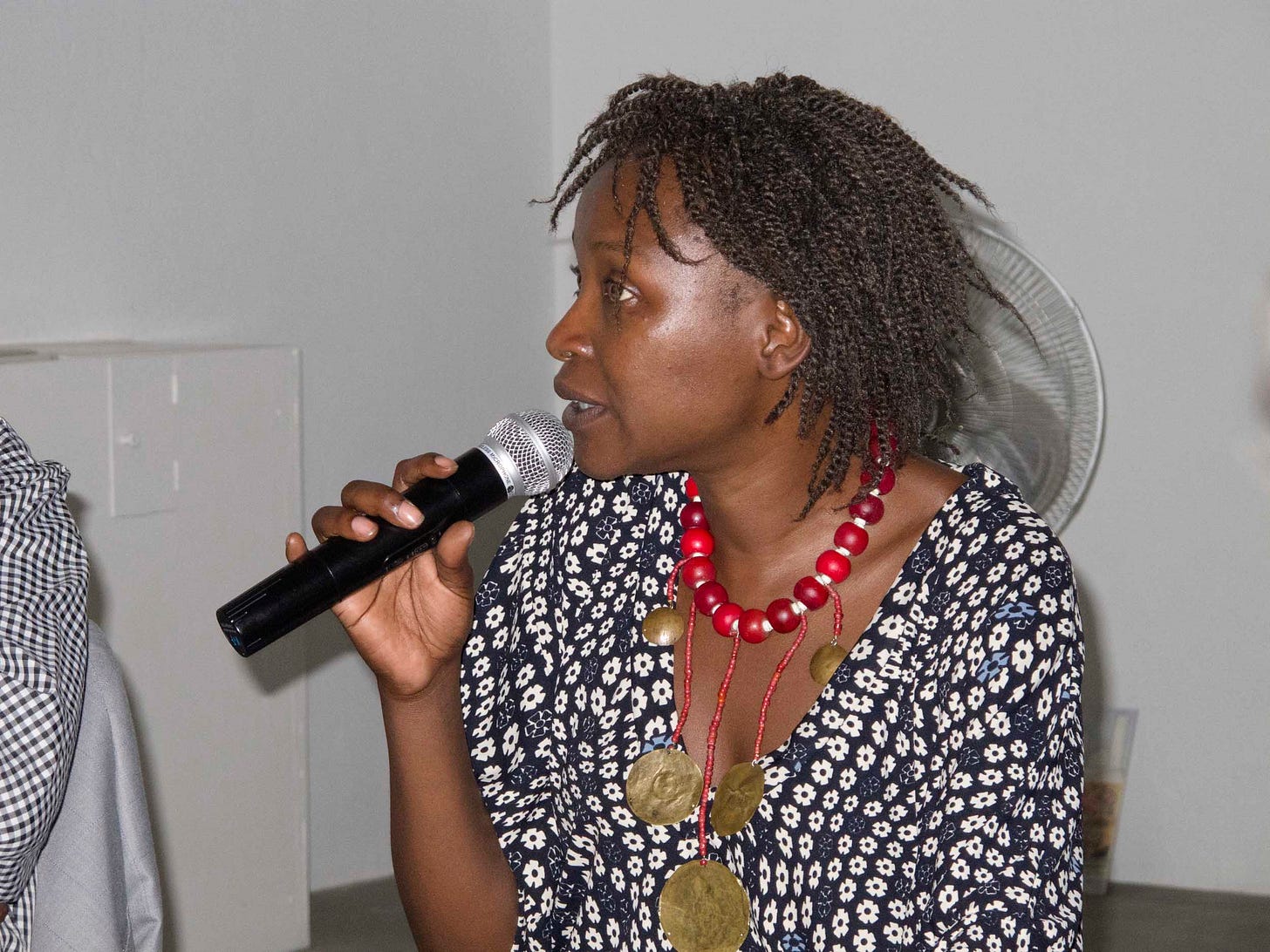
Good morning from… can you guess where? (Answer at the bottom!)
The Art World Mourns a Titan
Koyo Kouoh’s sudden passing at 57 feels like the art world’s version of losing its favorite playlist halfway through the best track. Days before she was set to unveil the theme and title of the 2026 Venice Biennale (an event she’d made history by helming as its first African woman curator) Ms. Kouoh succumbed to cancer in Switzerland.
She will be remembered as the dynamic curator who spent three decades prising open the art world to African voices and ideas.
Born in Douala, Cameroon, and raised partly in Switzerland, Kouoh studied business before pivoting to culture. In 1995 she moved to Dakar, Senegal, and founded Raw Material Company, a residency-cum-think-tank that mentored a generation of African curators. Her curatorial résumé soon ran the gamut from Documenta to the Irish Biennale.
In 2019 she took charge of Cape Town’s Zeitz MOCAA, then mired in scandal and debt. She rebuilt its staff, its reputation and its audience, mounting landmark shows such as When We See Us: A Century of Black Figuration in Painting. Artists praised her mix of fierce scholarship and street-level pragmatism; budgets and community engagement mattered as much to her as wall texts.
Kouoh styled herself as an international curator rooted in Africa, arguing that the goal was not to correct Euro-centric narratives but to “inscribe other perspectives.”
Hers is a tragic loss for Africa. What did she have planned for the 2026 Venice Biennale?
Kenya and Britain’s Reimagining at the Venice Biennale
Last week, we wrote about how the British Pavilion at the Venice Biennale was soon to be disrupted and reconceptualised as a fault line running from Nairobi straight through the British Empire to highlight extractivism.
Curious to see what Cave Bureau ended up creating? Well, here it is!
Nigerian Whovians gear up for Doctor Who’s first African adventure
When the Doctor Who teaser promised, “Welcome to Lagos,” Nigerian super-fan Adesoji Kukoyi screamed like a little girl. After decades glued to BBC reruns of the show, the 44-year-old is about to see his city star in an upcoming episode, the show’s first to be set mainly in Africa.
Writer Inua Ellams hints at “a time-bending cultural collision” featuring bustling markets, a lively barbershop and a gigantic spider that may (or may not) be the West African trickster Anansi. With Ncuti Gatwa’s Doctor and Ariyon Bakare’s enigmatic Barber, the episode promises Yoruba fabrics, Afrobeat energy and plenty of swagger.
Why the sudden Nigerian pit-stop after 62 years? Ellams says that past writers didn’t feel confident enough to produce an authentic African story. Ultimately, Lagos as the setting feels apt: in 2013 nine long-lost 1960s episodes were famously rediscovered in a Nigerian TV archive.
Unfortunately, these days the show no longer airs on local TV (Nigerians will need Disney+ to watch it) but Kukoyi is unfazed, saying there’s a hardcore fanbase waiting.
Goat Skins, Google, and God: The Ancient Art of Ethiopian Manuscripts
In a small Addis Ababa workshop, a handful of scribes sit hunched over goatskin parchments, painstakingly writing out centuries-old religious texts in Ge’ez – an ancient language so intricate that it takes about a minute just to spell out “God.” This is old-school text production at its finest: no computers, no printing presses, just homemade bamboo pens and ink brewed from crushed leaves and barley water.
You’d think these devout scribes would consider Google too modern, but guess where they go for artistic inspo when it’s time to paint angels and saints? Yep, the all-knowing search engine. Still, the rest of their operation looks like a scene beamed straight from the 4th century: piles of goat skins donated after feast days, hours spent poring over religious manuscripts, and the promise that each piece (once lovingly bound in leather and hammered with metal frames) could last another millennium.
Sure, mass-produced paper books are faster and cheaper, but for these scribes and painters, it’s all about preserving an unbroken tradition, keeping an ancient craft alive, and making sure that when people can’t read, they can at least feast their eyes on gorgeously illustrated saints. As one of the painters puts it: “When I paint, it’s like I can see the word of God.” If that’s not divine inspiration, then we don’t know what is.
Food for Thought
“If a tree does not have branches, it does not have shade.”
— Tanzania Proverb
And the Answer is…
The photo is taken from Cape Town, South Africa! You can also send in your own photos, alongside the location, and we’ll do our best to feature them.







